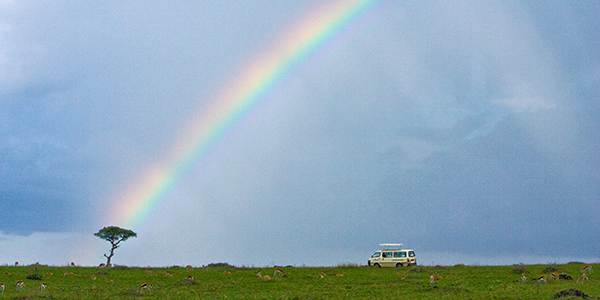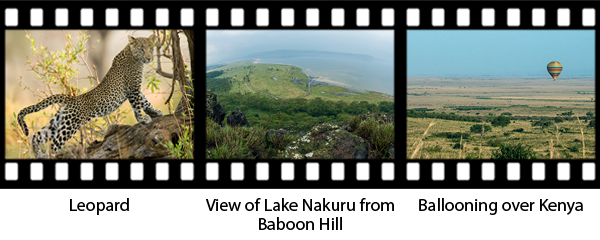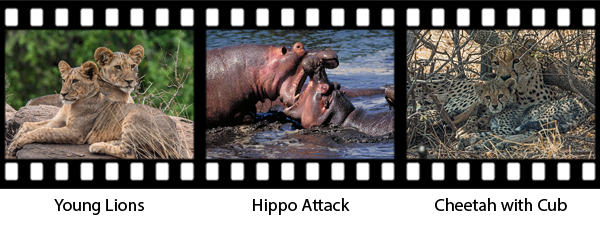
My tours to Africa take place primarily in Kenya because I feel very safe and comfortable with the people, government (for the most part), the wildlife is abundant, and the scenics are spectacular! Kenya is famous for its safaris and diverse wildlife reserves and national parks such as the East and West Tsavo National Park, the Maasai Mara, Lake Nakuru National Park, and Aberdares National Park. There are several world heritage sites such as Lamu, and world renowned beaches such as Kilifi where international yachting competitions are held each year.
Kenya has a diverse and varied geography. The variation is easily visible in the mountains, coastline, countryside and flat plains. Kenya is located on the eastern part of the African continent and lies on the equator. The country is bordered in the north to Sudan and Ethiopia and Uganda in the west. Somalia and the Indian Ocean form the eastern border and Tanzania the southern border. The Kenyan coast is an area which is extremely fruitful. In general, one can say that the country extends from sea to the east to the desert in the north.
One area I love, and is considered the main feature of Kenya, is the Great Rift Valley located in the western and central part of the country. The valley roughly divides the Kenyan highlands in half. There are a large number of lakes and rivers in Kenya, which form an important part of the geography of Kenya, as well as attracting all sorts of wildlife. Lake Turkana is located in the northern part of the country. In the western part of the country is the second largest lake in the world– Lake Victoria. Other large lakes of the country are Lake Naivasha and Lake Nakuru. Lake Nakuru is where I photographed one of my most cherished images—the leopard in the Yellow Fever Tree! It was my first sighting of a leopard after 11 trips to that country!! Another major river of significance is the Ewaso Ngiro passing through the north-eastern part of the country. There are hundreds of birds around these lakes, as well as mammals coming to drink & feed. In the east there are a large number of the rainforests.
 The African Great Lakes region, of which Kenya is a part, has been inhabited by humans since the Lower Paleolithic period. The Bantu expansion reached the area from West-Central Africa by the first millennium AD, and the borders of the modern state comprise the crossroads of the Niger-Congo, Nilo-Saharan and Afro-Asiatic ethno-linguistic areas of the continent, making Kenya a multi-cultural country. European and Arab presence in Mombasa dates to the Early Modern period, but European exploration of the interior began only in the 19th century. The British Empire established the East Africa Protectorate in 1895, known from 1920 as the Kenya Colony. The Republic of Kenya became independent in December 1963. Following a referendum in August 2010 and adoption of a new constitution, Kenya is now divided into 47 semi-autonomous counties, governed by elected governors.
The African Great Lakes region, of which Kenya is a part, has been inhabited by humans since the Lower Paleolithic period. The Bantu expansion reached the area from West-Central Africa by the first millennium AD, and the borders of the modern state comprise the crossroads of the Niger-Congo, Nilo-Saharan and Afro-Asiatic ethno-linguistic areas of the continent, making Kenya a multi-cultural country. European and Arab presence in Mombasa dates to the Early Modern period, but European exploration of the interior began only in the 19th century. The British Empire established the East Africa Protectorate in 1895, known from 1920 as the Kenya Colony. The Republic of Kenya became independent in December 1963. Following a referendum in August 2010 and adoption of a new constitution, Kenya is now divided into 47 semi-autonomous counties, governed by elected governors.
 Taking photographs of wild animals, exotic birds, and the country’s lifestyles is equaled when driving around and viewing & photographing the fabulous scenery!! Enjoy your slide-show journey to Kenya, Africa & think about joining us this September 2013.
Taking photographs of wild animals, exotic birds, and the country’s lifestyles is equaled when driving around and viewing & photographing the fabulous scenery!! Enjoy your slide-show journey to Kenya, Africa & think about joining us this September 2013.
I am off to Hungary, Slovenia and Romania in a few days. I hope to have exciting news and wonderful images to share upon my return.
Happy Shooting!!!
Enjoyed this Post? Share it!
Share on Facebook Tweet This!